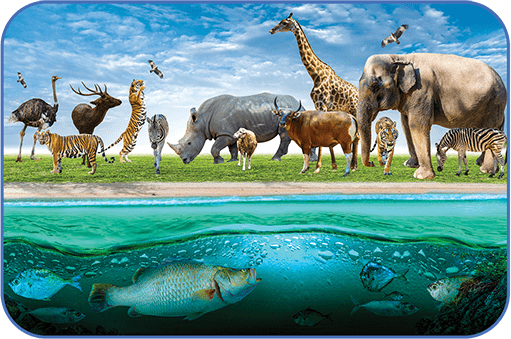moviescout.org – In an era where human activity has significantly altered the natural world, wildlife conservation has become a critical endeavor to preserve the planet’s biodiversity. The term ‘biodiversity’ encompasses the variety of life on Earth, including all the species of plants, animals, fungi, and microorganisms, the genes they contain, and the ecosystems they form. Preserving biodiversity is not just about protecting individual species; it is about maintaining the complex ecological systems that support life on our planet. This article explores the importance of wildlife conservation, the challenges it faces, and the strategies employed to ensure the survival of species for future generations.
The Importance of Biodiversity
Biodiversity is the backbone of ecosystem services, which are the benefits that humans freely gain from the natural environment. These services include air and water purification, pollination of crops, pest control, and carbon sequestration, which helps mitigate climate change. Beyond these practical benefits, biodiversity also has intrinsic value, offering aesthetic, cultural, and spiritual benefits to humanity. The loss of biodiversity, therefore, not only threatens the natural world but also undermines human well-being and economies.
Challenges in Wildlife Conservation
Wildlife conservation faces numerous challenges, including habitat destruction, climate change, pollution, invasive species, and poaching. Habitat destruction is the leading cause of species extinction, as it disrupts ecosystems and deprives species of the resources they need to survive. Climate change is another significant threat, altering habitats and disrupting the delicate balance of ecosystems. Pollution and invasive species can also devastate local wildlife, while poaching and illegal wildlife trade threaten the survival of many species.
Strategies for Wildlife Conservation
To address these challenges, conservationists employ a variety of strategies, including habitat protection and restoration, wildlife management, and public education and engagement. Protected areas, such as national parks and wildlife reserves, are crucial for providing safe habitats for wildlife. Conservation organizations also work to restore degraded habitats and reintroduce species to areas where they have become extinct. Wildlife management involves controlling human activities to minimize their impact on wildlife, such as regulating hunting and fishing. Public education and engagement are essential for building support for conservation efforts and encouraging sustainable behaviors.
The Role of Technology in Conservation
Technology is playing an increasingly important role in wildlife conservation. Advances in remote sensing, GPS tracking, and genetic analysis are providing new tools for monitoring wildlife populations and their habitats. Social media and other digital platforms are also being used to raise awareness and mobilize support for conservation efforts.
Conclusion
Wildlife conservation is a complex and challenging field, but it is essential for preserving the planet’s biodiversity for future generations. By understanding the importance of biodiversity, addressing the challenges that threaten it, and employing effective conservation strategies, we can ensure that wildlife continues to thrive. The role of technology in conservation offers new hope for protecting species and their habitats, but ultimately, the success of wildlife conservation depends on the collective action of individuals, communities, and governments around the world.
